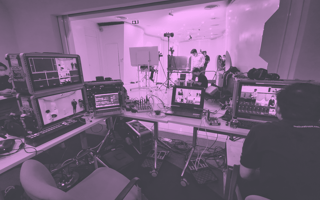What a difference a year makes.
2020 was the year of the great pause and pivot, especially when it came to large-scale, in-person live meet-ups. Let’s take music as an example. Tours and in-person concerts were hit especially hard in the pandemic, halting an industry that had previously cruised upward year after year, earning billions and billions of dollars.
According to Pollstar, the projected U.S. revenue loss from the hiatus of live music events could total $9 billion in 2020 alone. Does that mean 2020 is the year the music died?
Fortunately, that’s not the case, thanks to livestreaming. Grand View Research reports that, what live events lost in revenue, livestreaming gained. This niche is now expected to grow by 21 percent year-over-year through 2028.
Livestreaming was already popular before the pandemic hit, and it won’t end when COVID-19 does. Even when some semblance of normalcy returns, live digital experiences will become an essential part of brand playbooks. The most successful campaigns purposefully connect with consumers both in real life (IRL) and in virtual life (IVL) as brands look to scale, drive engagement and measure results. Brands are also finding they can close the loop on their investment and experience a new level of ROI by taking advantage of livestreaming.
With this in mind, here are some considerations for 2021 and beyond.
Experiences Reign
Although I’ve been using the term “livestreaming” in this piece, I’d like to suggest a change in language to the term “live digital experiences.” Livestreaming is just a technology platform; live digital experiences, on the other hand, encompass all kinds of dynamic content that engages audiences. These can be things like storytelling across formats and platforms, mixing studio and on-location content in a single live event or interactive elements like a question-and-answer session, AR and in-the-moment charitable donations, to name just a few.
Some digital experiences are one-to-many, where one or more artists broadcast their performances to as many fans as possible. For example, my company produced Bud Light Selzer’s New Year’s Eve Sessions, where we created an IVL celebration for people stuck at home who would typically be partying at clubs and bars. Steve Aoki, Sebastian Yatra, Post Malone and many other artists performed from Los Angeles, New York City, Miami and Las Vegas for the online audiences.
Those experiences can also have a many-to-one structure, in which brands replicate VIP moments online. We also recently arranged a meet-and-greet for Spirit Airlines employees with Brett Young. The goal was intimacy and exclusivity, which meant that employees left feeling valued.
Talent-Led Executions Will Win
Audiences don’t believe brands, but they do believe talent. Sometimes, finding the right talent is the biggest decision you’ll make. Does your event require a multiplatinum performer, or is finding the next “it” star on YouTube the better strategy? So long as talent and brand integration is authentic, you’re halfway there. Find the answer by comparing your brand values and goals to those of the talent.
Another thing to consider is that you need to keep things fresh. We often find that brands that latch onto just one artist see diminishing returns; the audience becomes immune. Brands should consider rotating talent to find new waves of audiences.
Brand-Owned Is the Way to Go
The industry will see more and more brand-owned versus brand-attached digital experiences. When brands own their events’ intellectual property, they can leverage talent, drive specific business results and create new media value while collecting first-party data. When they attach themselves to another brand’s event, they risk being overshadowed by talent, experiencing ROI gaps, and contributing media value to someone else’s brand instead.
When the pandemic hit, Grubhub’s Sound Bites program shifted from producing live events in non-traditional venues across the country to a completely live, digital experience with new moments like fan Q&As and private virtual meet-and-greets with artists for GrubHub+ members. So far, we’ve executed nine events on their behalf with 17 million-plus tune-ins and more than 200,000 orders placed.
Grubhub has grown its customer relationships and sales because they consistently offer content that entertains. If they had attached themselves to someone else’s brand, they would’ve been riding shotgun versus sitting in the driver’s seat. Without control over the property, they would’ve been waiting for someone else to create the strategy and restrictions around content use.
Digital Marketing or Bust
Brands can create the very best digital live experience, but if they don’t promote it well, no one will show. I’ve seen this happen again and again. I saw a brand-owned SZA video, which should find a huge audience, with just 600 views. I doubt anyone was happy.
Brands will need to hire expert digital marketers or work with agencies to promote their live digital experiences, just like a network would promote an upcoming soccer match. Drip behind-the-scenes footage and talent interviews, engage influencers and slice and dice content for social consumption and engagement. And don’t stop when the event goes up. Remember that post-event promotion maximizes your reach.
Brands also understand that maximizing eyeballs during the live moment is the most important play there is. Find scaled and targeted audiences and reach them everywhere they could potentially watch the livestream at that moment. This is a skill that will become increasingly important in a post-COVID world.
Livestream the Future Now
COVID-19 changed consumer behavior for good. Fans want and expect incredible experiences from the comfort of their own home that connect them with their favorite talent and like-minded people, wherever in the world they may be. They’ll return to in-person events, but they’ll also continue to want more livestreaming options. Brands and talent must deliver on that expectation.





